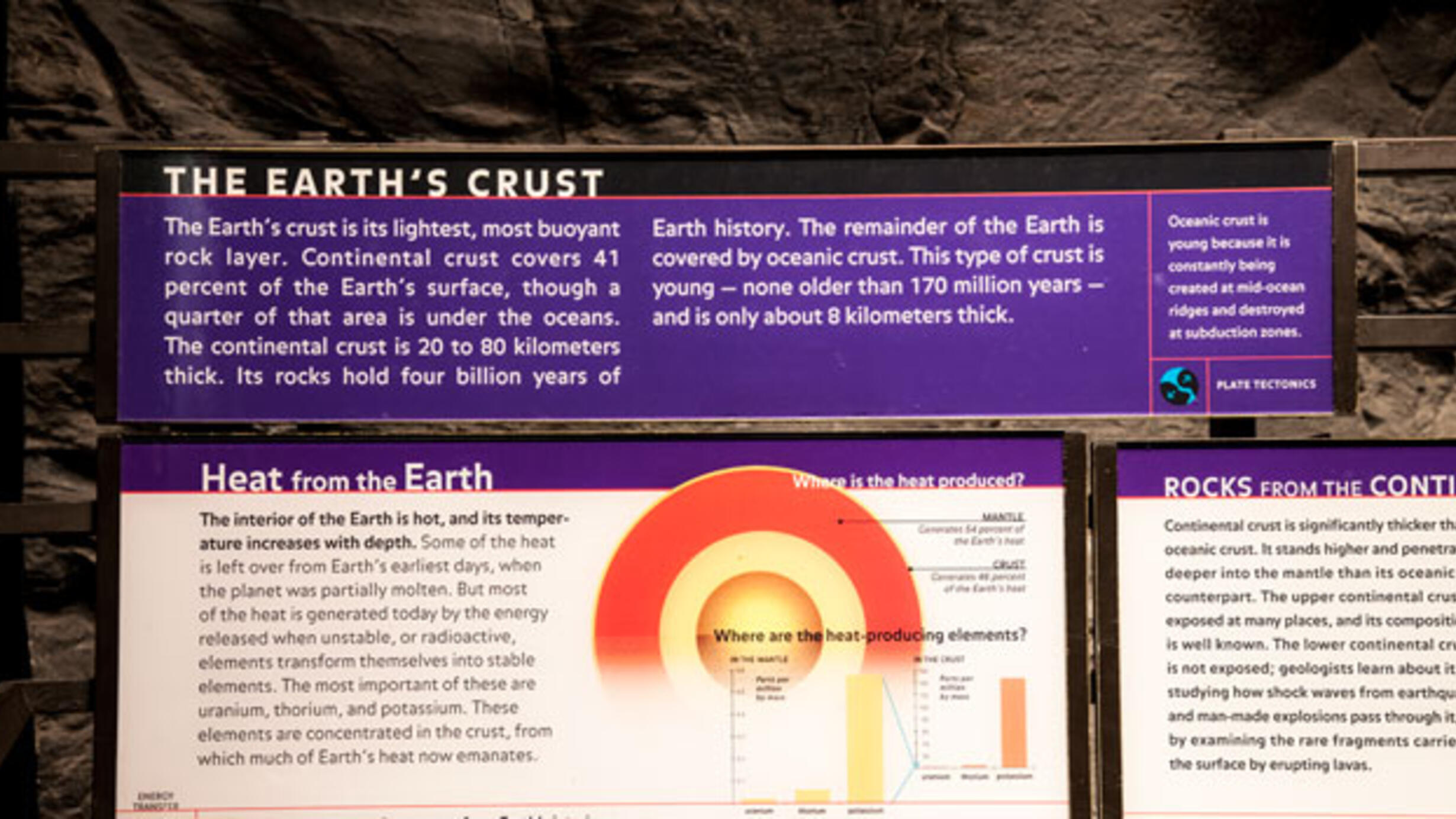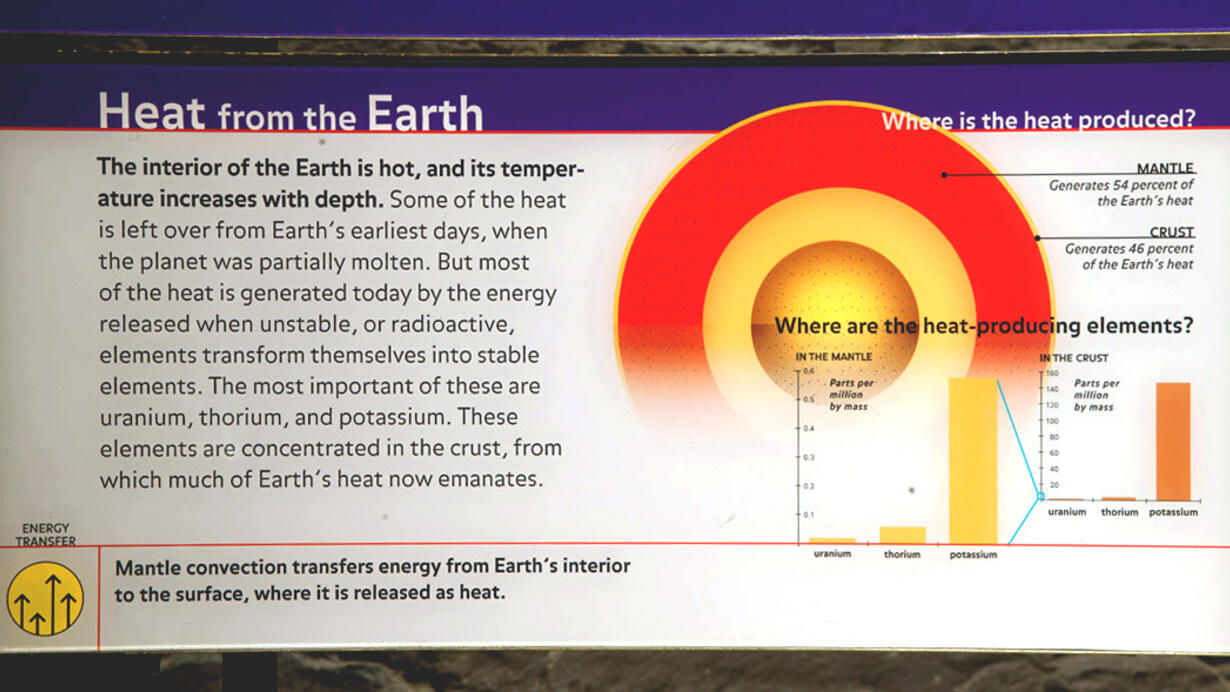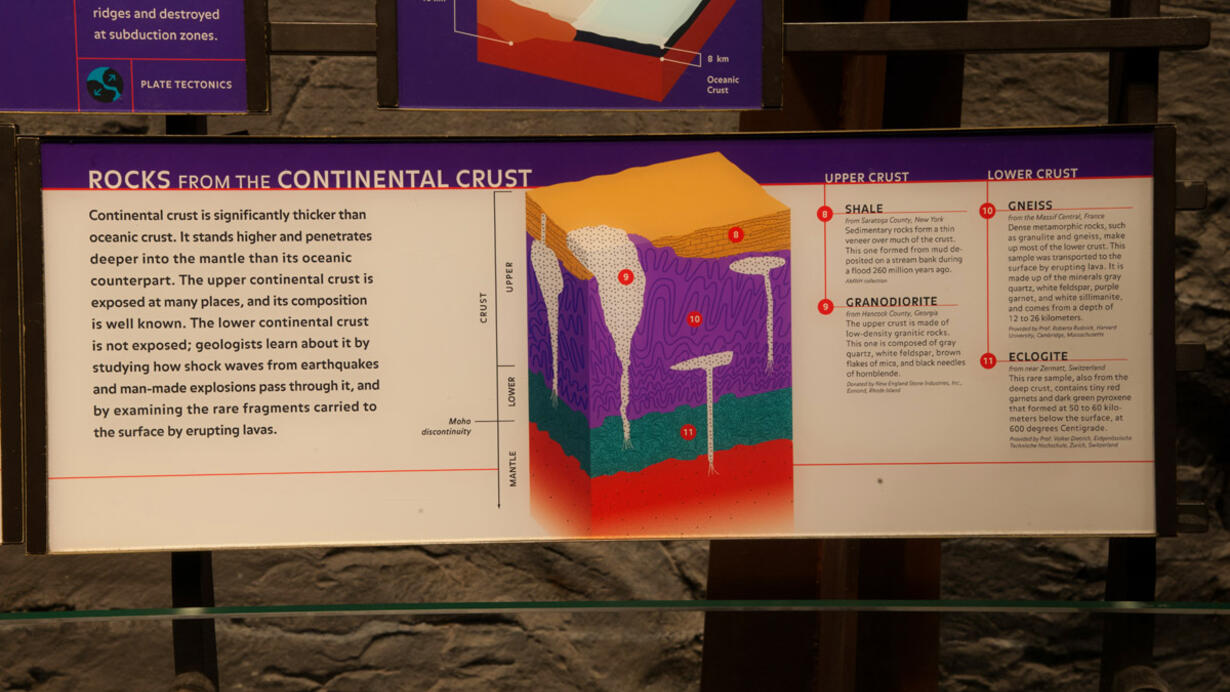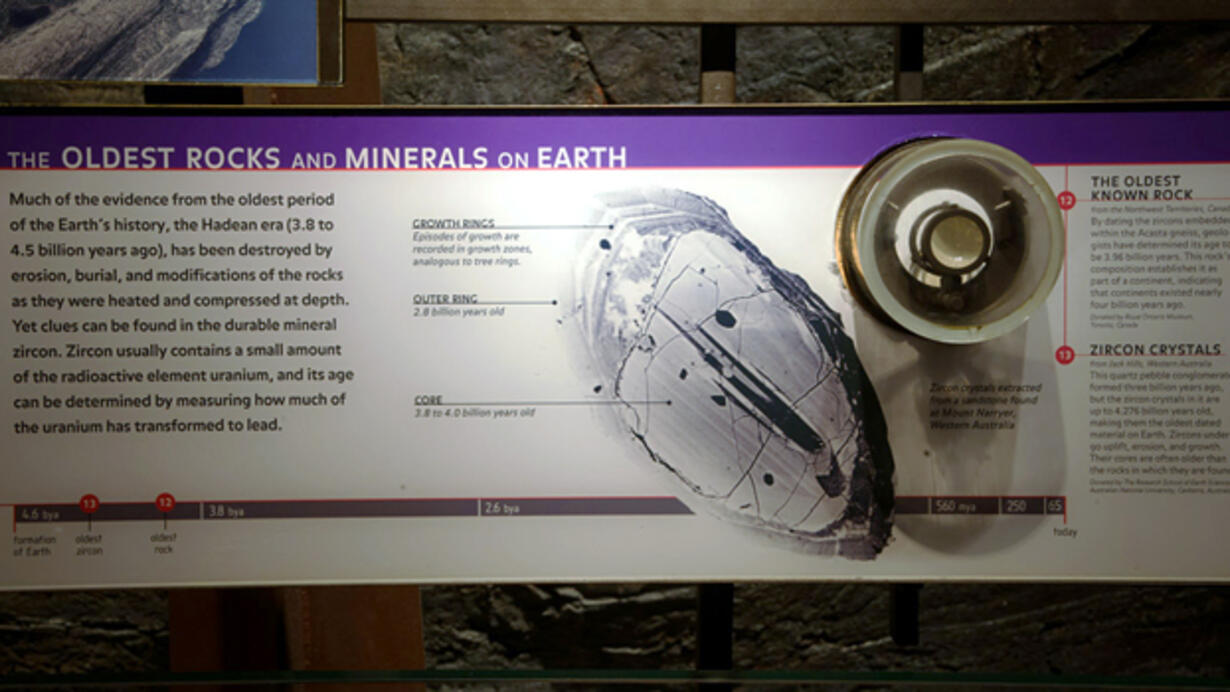The Earth's Crust
Part of Hall of Planet Earth.

The Earth’s crust is its lightest, most buoyant rock layer. Continental crust covers 41percent of the Earth’s surface, though a quarter of that area is under the oceans. The continental crust is 20 to 80 kilometers thick. Its rocks hold four billion years of Earth history. The remainder of the Earth is covered by oceanic crust. This type of crust is young — none older than 170 million years — and is only about 8 kilometers thick.
In This Section

Heat From the Earth
The interior of the Earth is hot, and its temperature increases with depth. Some of the heat is left over from Earth’s earliest days, when the planet was partially molten. But most of the heat is generated today by the energy released when unstable, or radioactive, elements transform themselves into stable elements. The most important of these are uranium, thorium, and potassium. These elements are concentrated in the crust, from which much of Earth’s heat now emanates.
 AMNH/R.Mickens
AMNH/R.Mickens Rocks From the Continental Crust
Continental crust is significantly thicker than oceanic crust. It stands higher and penetrates deeper into the mantle than its oceanic counterpart. The upper continental crust is exposed at many places, and its composition is well known. The lower continental crust is not exposed; geologists learn about it by studying how shock waves from earthquakes and man-made explosions pass through it, and by examining the rare fragments carried to the surface by erupting lavas.

The Oldest Rocks and Minerals on Earth
Much of the evidence from the oldest period of the Earth’s history, the Hadean era (3.8 to 4.5 billion years ago), has been destroyed by erosion, burial, and modifications of the rocks as they were heated and compressed at depth. Yet clues can be found in the durable mineral zircon. Zircon usually contains a small amount of the radioactive element uranium, and its age can be determined by measuring how much of the uranium has transformed to lead.